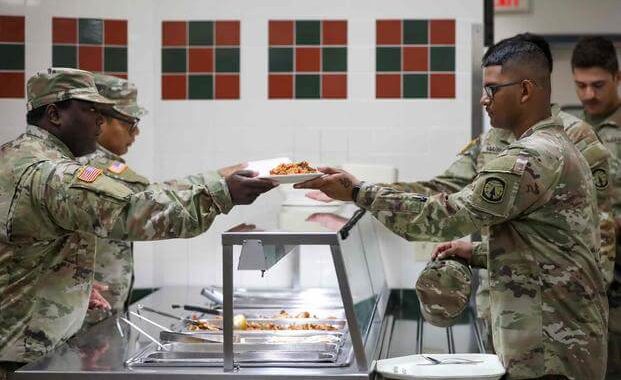Beads of Courage Mark Milestones During a Child’s Medical Treatment
3 min read
FORT SAM HOUSTON, TX, UNITED STATES
06.06.2019
Courtesy Story
Brooke Army Medical Center Public Affairs
Cancer is a tough row to hoe no matter what age you are. If you’re old enough to understand at least some of the things the nurses and doctors tell you, it helps some.
But what if you’re a kid? All you know is that people keep poking and prodding and other stuff that’s so uncomfortable. That’s where Beads of Courage comes in. For almost every procedure that happens to the little patient while in the hospital at Brooke Army Medical Center, a brightly colored bead is given to the child or their parent. Like the gold star you got as a kid for a job well done, the bead says “that stunk, but I got through it.”
The Beads of Courage Program is a resilience-based, arts-in-medicine, supportive care program designed to support children and their families coping with serious illness, according to their website.
Why beads? Like the medals and certificates military members receive showing bravery and the accomplishments of their career, the beads tell the child’s medical story and are symbols of courage that acknowledge milestones they have achieved and procedures they have gone through as part of their medical treatment plan.
Here’s where BAMC Retiree Activity Group volunteer Elvira Morales comes in. Morales helps with the beads program by stocking the boxes from which the nurses take beads for their patients in the neonatal intensive care unit, pediatrics ward, and pediatric intensive care unit. She’s been volunteering for Brooke Army Medical Center since March 2014.
“I started in the labor and delivery unit as an escort,” said Morales. “When the beads program began in October 2017, I stepped in to help with that.”
Besides volunteering with the beads program Morales is attending graduate school at the University of Texas San Antonio. She already has a bachelor’s of science degree in Public Health and is now majoring in biotechnology to eventually become an obstetrics/gynecology physician.
Morales said she loves what she does and where she does it, and would very much like to return to BAMC to work once she completes her education.
“I love it here that’s why I’ve been here so long,” she said. “I love this hospital.”
According to Amy Beyer, BAMC’s Neonatal Intensive Care Unit medical social worker, within a few days of the child being admitted, he/she is issued a drawstring bag, a cord to string the beads on, the proper alphabet beads to spell their name, and what’s called a prescription card – a card listing all the different beads and the procedures assigned to them.
As procedures are marked on the card the corresponding bead is pulled and placed in the child’s bag. For example, if the child receives a transfusion, he gets a red bead, if he receives wound care he gets a tortoise bead, and if he gets poked he gets a black bead. When all treatments are done and the child is well enough to go home he is given a bead shaped like a dove. However, in the unfortunate case the child doesn’t make it, the family is given a large colorful butterfly bead to finish his string.
“Children aren’t the only ones who benefit from the beads,” Beyer said. “Parents enjoy them as well. They find them therapeutic as well as educational. Stringing the beads gives the parents something to do during wait times and allows them to see what their child has been through.”
Later, they can show a child, who maybe was too young to understand at the time, what had happened to them, and makes it easier to share with others what the family and the child had gone through,” she added.





